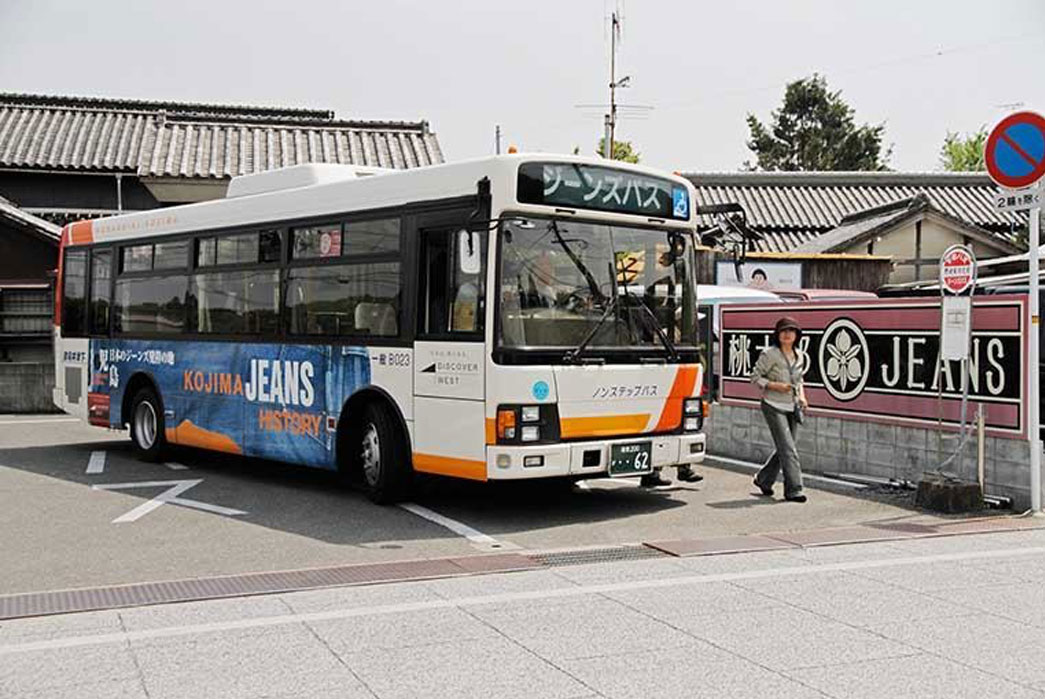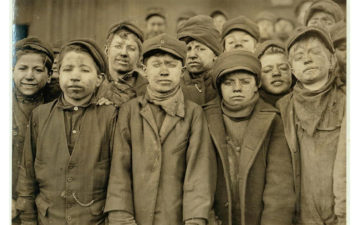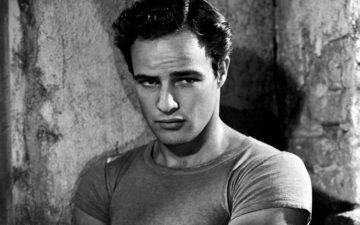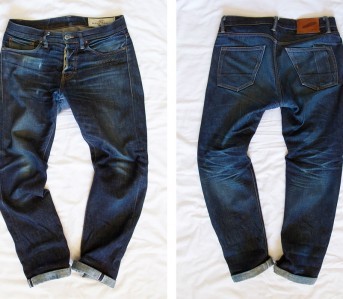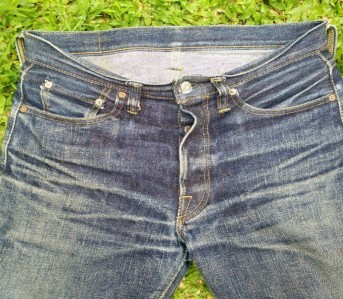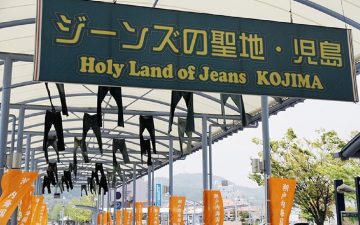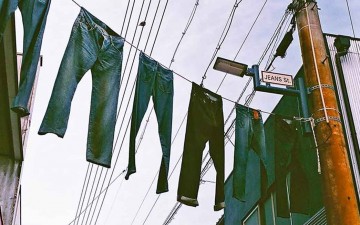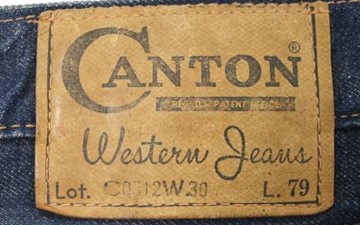The author of Ametora: How Japan Saved American Style digs into the history to find why exactly Okayama became the spiritual center for Japanese jeans.
In the last two decades, Okayama Prefecture in Western Honshu has become famous around the world as the main source of Japan’s high-quality, vintage-inspired jeans. And within Okayama, denim heads make pilgrimages to a small seaside city called Kojima — “Japan’s Denim Capital,” the “Birthplace of Japanese Jeans,” and even, the “Holy Land of Jeans.”
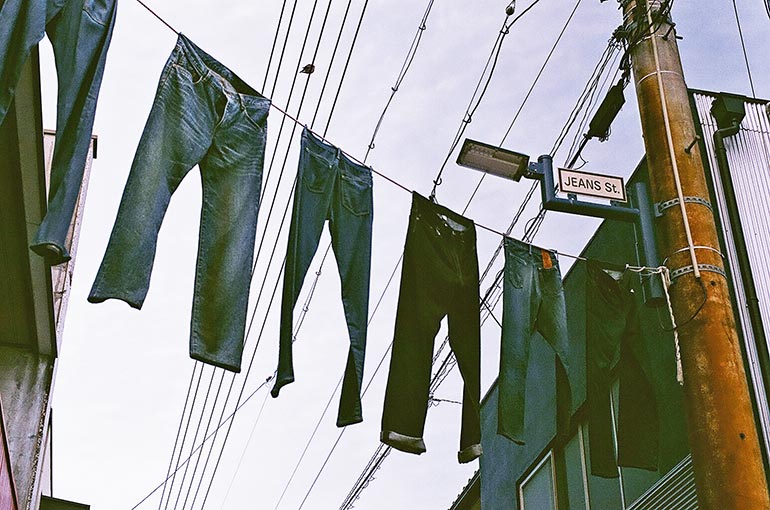
Jeans hanging in Okayama’s Jeans Street.
With Japanese brands often linking Kojima’s modern industry directly back to centuries-old traditions, it may sometimes seem natural for a relatively obscure region of Japan to be country’s spiritual center for American-style denim. But myths often obscure the real history: so let us look at the fortuitous circumstances and savvy business decisions that turned Okayama into the global symbol of Japanese denim.
From School Uniforms to Cowboy Pants
Official histories of Okayama such as Shinsaku Sugiyama’s The Story of Japanese Jeans (echoed in this Krash Japan article) often begin many centuries ago with the rise of small-scale cotton agriculture and a textile industry around Kojima. In this context, jeans seem like a natural and obvious outgrowth of a region rich in cotton, indigo dyeing, weaving, and sewing. But the coast of Okayama was by no means the only region of Japan that produced textiles — nor was it famous for indigo dyeing. The only important thing to note about Kojima’s pre-history is that local industry focused on crafts rather than agriculture.
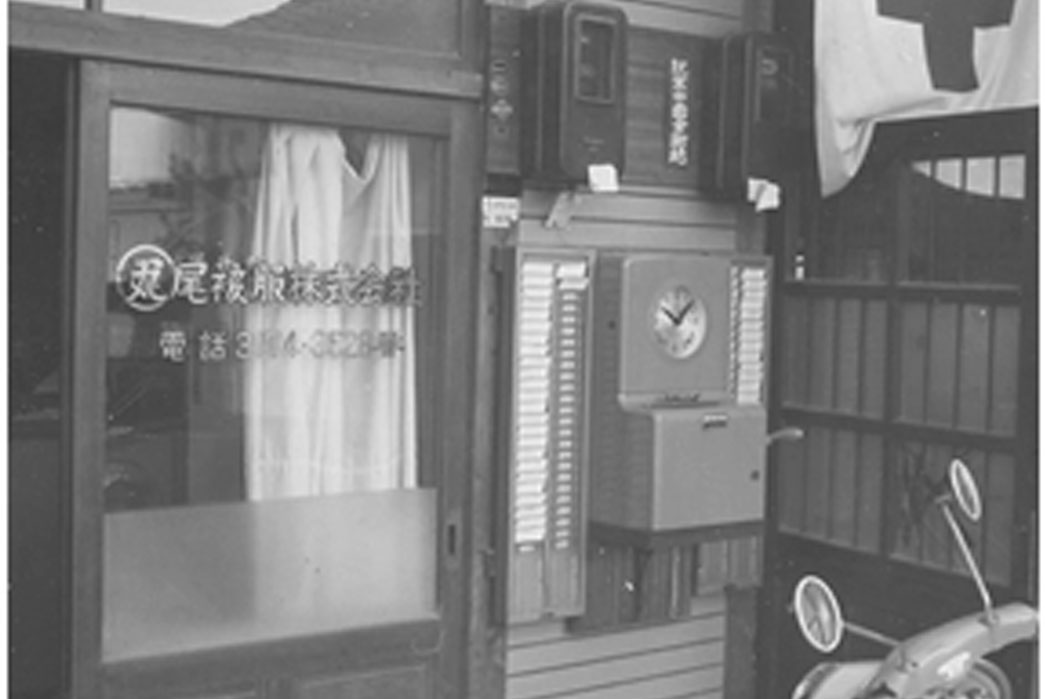
The entrance to Maruo Clothing’s factory with timeclock. Image via Big John.
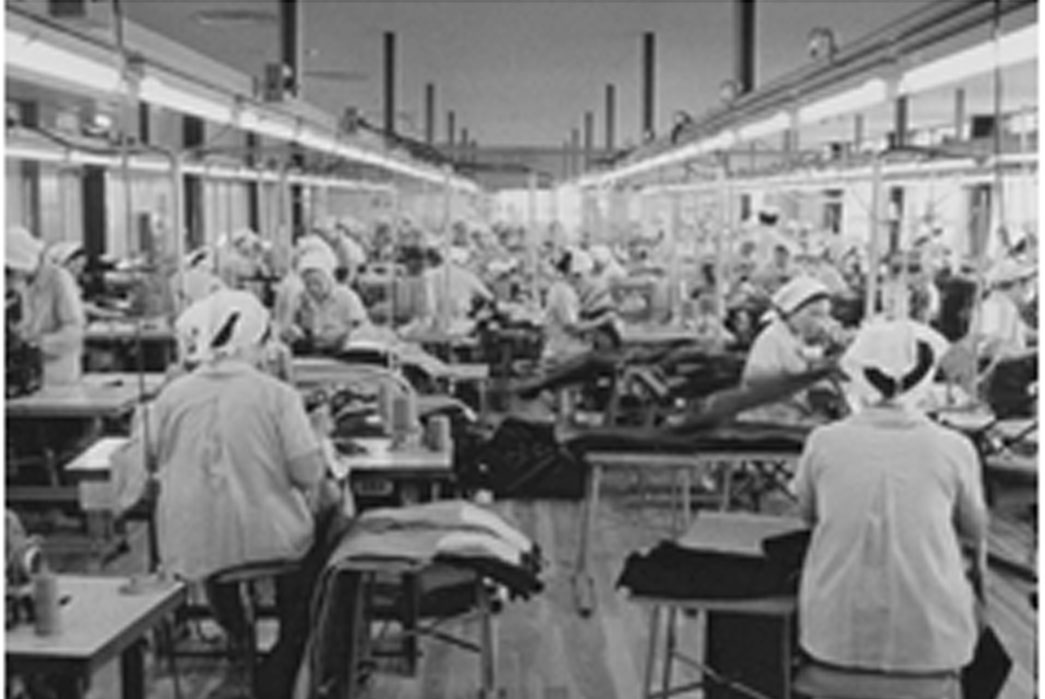
Inside the Maruo factory. Image via Big John.
Ultimately, the rise of Okayama as a denim mecca comes down to the actions of a single company — Maruo Clothing, which later changed its name to Big John. Maruo was a leader in Kojima’s greatest export at the time — school uniforms. After the war, however, cotton was in short supply, so Maruo made uniforms from a cheap synthetic fiber called vinylon. This went well until textile powerhouses Toray and Teijin started selling a better polyester called Tetoron and locked Maruo out of the supply. Suddenly schools asked for Tetoron uniforms, and Maruo’s vinylon uniform business slid towards bankruptcy.
In the postwar years, Maruo had also produced winter jackets, wholesaling them to a shop in Tokyo’s Ameyoko black market called Maruseru. As a supplementary source of income, Maruo took contract work from Maruseru to re-cut discarded old American jeans to fit Japanese bodies. Maruseru then had an idea of how to solve its perpetual supply problem for jeans: Maruo could just make its own jeans, sure to be much cheaper than American imports. With the school uniform business crashing, Maruo staked the entire business on becoming a jeans manufacturer. This must have felt like an insane move at the time, when almost no one in all of Okayama owned a pair of jeans.
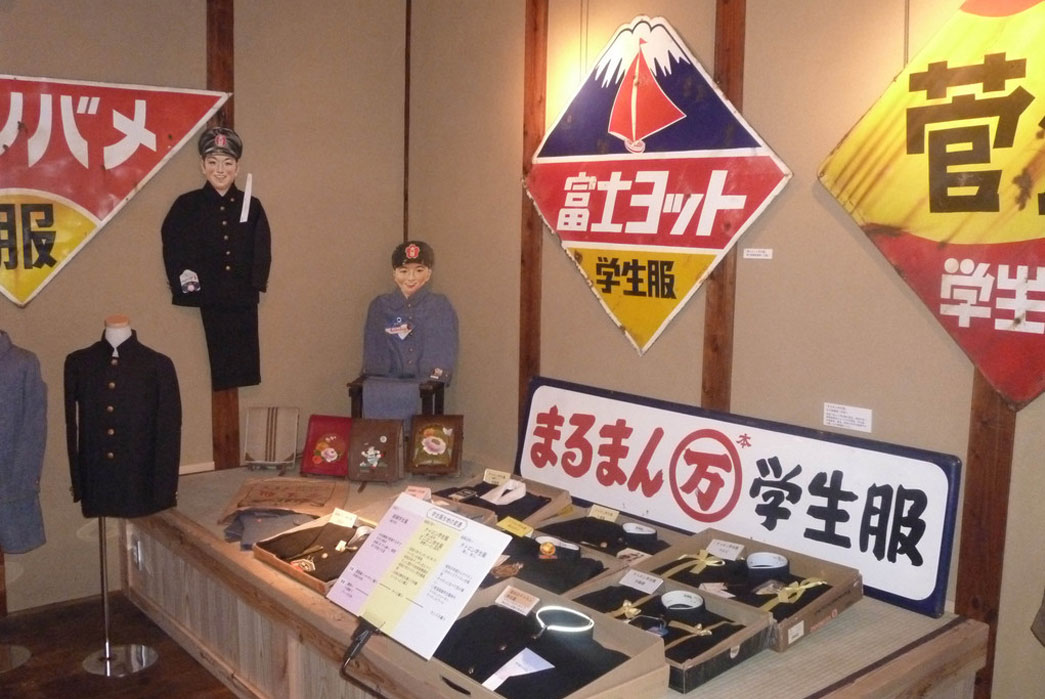
Examples of school uniforms produced in Okayama. Image via Okayama Kanko.
At first, limited access to denim forced Maruo to sew jeans under contract for the Canton brand based in Tokyo (related reading: “Who Made Japan’s First Jeans?“). But by 1967, Maruo convinced North Carolina’s Cone Mills to send them scraps, short rolls, and B-grade rolls, with which they created an original line called Big John. This brand went on to become the best selling jeans brand in Japan through the 1970s — even beating out the American originals Levi’s, Lee, and Wrangler.
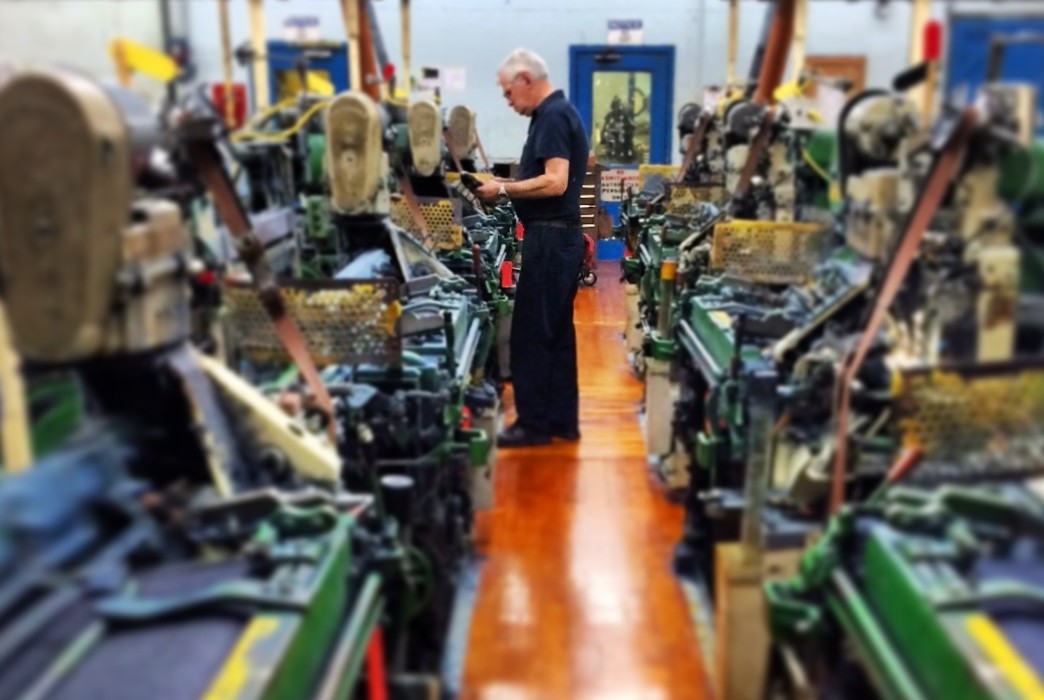
On the floors in the Cone Mills White Oak weave room in North Carolina.
The move into jeans not only saved Maruo Clothing’s business but also transformed Kojima. Japanese consumers liked pre-washed jeans, which created lots of work for businesses specializing in washing and treatments. And once Big John secured a stable supply of denim from Cone Mills, they invited other Kojima companies to jump into the jeans industry. Maruo’s president recruited his younger brother at Yamao Clothing Industry to launch a lower priced denim line called Bobson in 1971. The same year, the older brother of Big John’s Toshio Ōshima started producing a women’s denim brand called Betty Smith (“Betty” being Bob and John’s sister). Kojima’s Kanewa Clothing, a tabi socks company, struck a deal with Tokyo’s Edwin to sew the brand’s jeans, and after two years, started an original brand, John Bull.
While no companies in Kojima made denim at this time, they did help spur Japanese textile makers to give it a shot. In the early 1970s, Big John asked Kurabo (Kurashiki Boseki) to start producing denim in Japan. Kurabo could spin the yarns but could not do the dyeing. So they worked with two companies from the nearby Fukuyama region of Hiroshima — Sakamoto Denim and Kaihara, who both had a long history using indigo to dye bingo-gasuri. Okayama certainly started the first widespread industry around making jeans, but it was the Bingo region of Hiroshima made the first Japanese denim.
The Rise of High-end Denim Brands
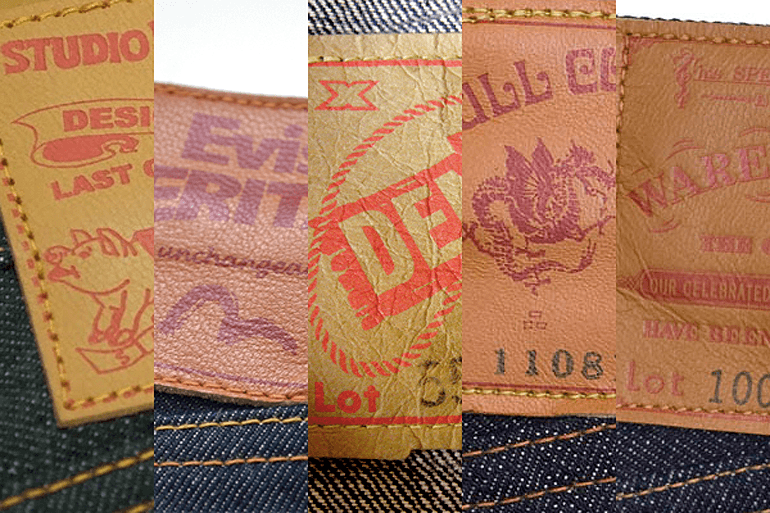
The brands of the Osaka Five.
For decades, Kojima acted as the country’s design, sewing, and washing base for jeans, but few consumers knew much about Okayama’s role in the “jeans revolution” beyond what they saw in the fine print on Big John or John Bull tags. It did not help in the 1990s with the appearance of the “Osaka Five” high-end reproduction lines: Studio D’Artisan, Denime, Evisu, Full Count, and Warehouse.
These brands established Osaka as the place in Japan where designers truly understood great jeans. Behind the scenes, however, Evisu and Denime were highly dependent upon Okayama factories for sewing. And Mikiharu Tsujita got Full Count off the ground working with Kojima’s upstart textile mill Collect to make the world’s first denim made from Zimbabwe long-staple cotton.
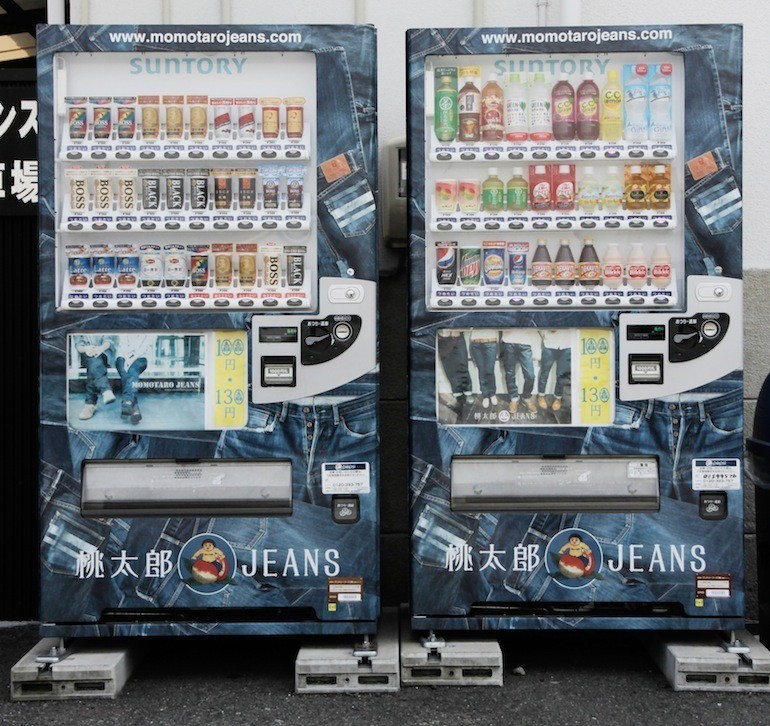
Momotaro Jeans Vending Machines on Jeans Street.
These interactions gave Okayama companies the idea to make their own high-end denim, and it is from here, that the modern legend of Okayama truly starts. In 2001, sewing factory Capital started its Kapital line based in Kojima, and then in 2005, Collect (i.e. Japan Blue Group) made its own vintage-inspired jeans named after the local Okayama legend, Momotaro. These new brands took Kojima from a sewing base and manufacturer of mass-market jeans to a city known for artisanal, cutting-edge denim.
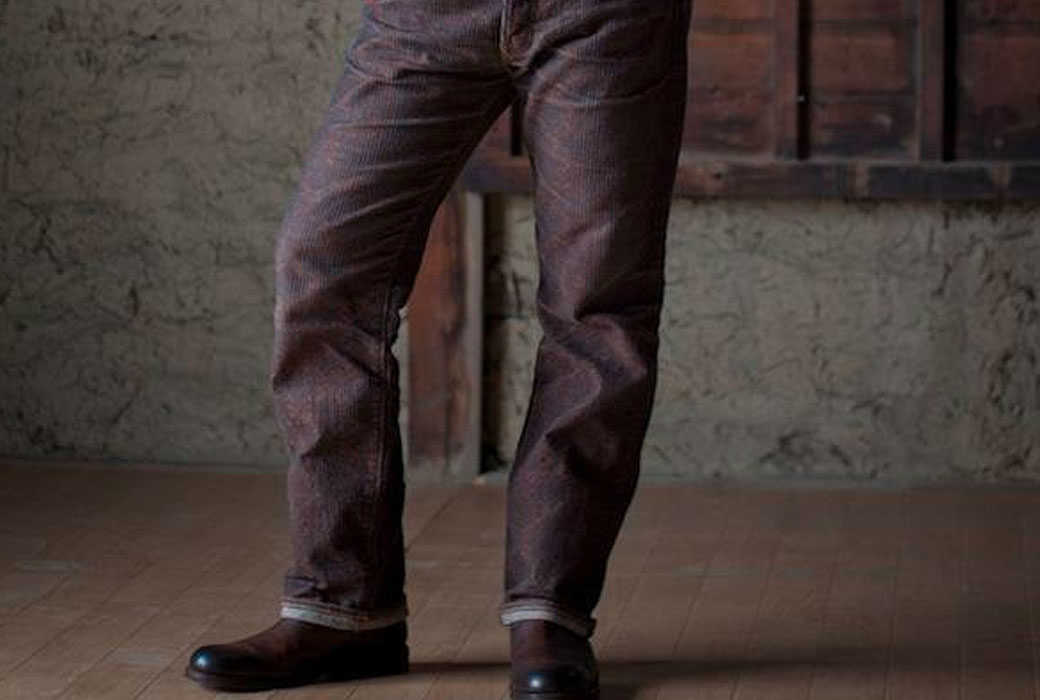
Sashiko woven Century denim from Kapital.
One of the smartest moves in this rebranding effort was the renovation of Kojima’s downtown. Like so many small towns in Japan, most of the shops along the shopping avenue “Ginza Street” were shuttered. In 2009, Japan Blue Group led an effort to resurrect the area as “Kojima Jeans Street” — a celebration of Kojima’s history and brands.
A special jeans-themed bus takes tourists to the street from the train station, where each of the local brands have their own little shops. And to make things more fun, they even serve denim-colored blueberry ice cream. Betty Smith meanwhile opened a Jeans Museum. Kapital does not participate on Jeans Street but has added to Kojima’s attractions with several large retail spaces.
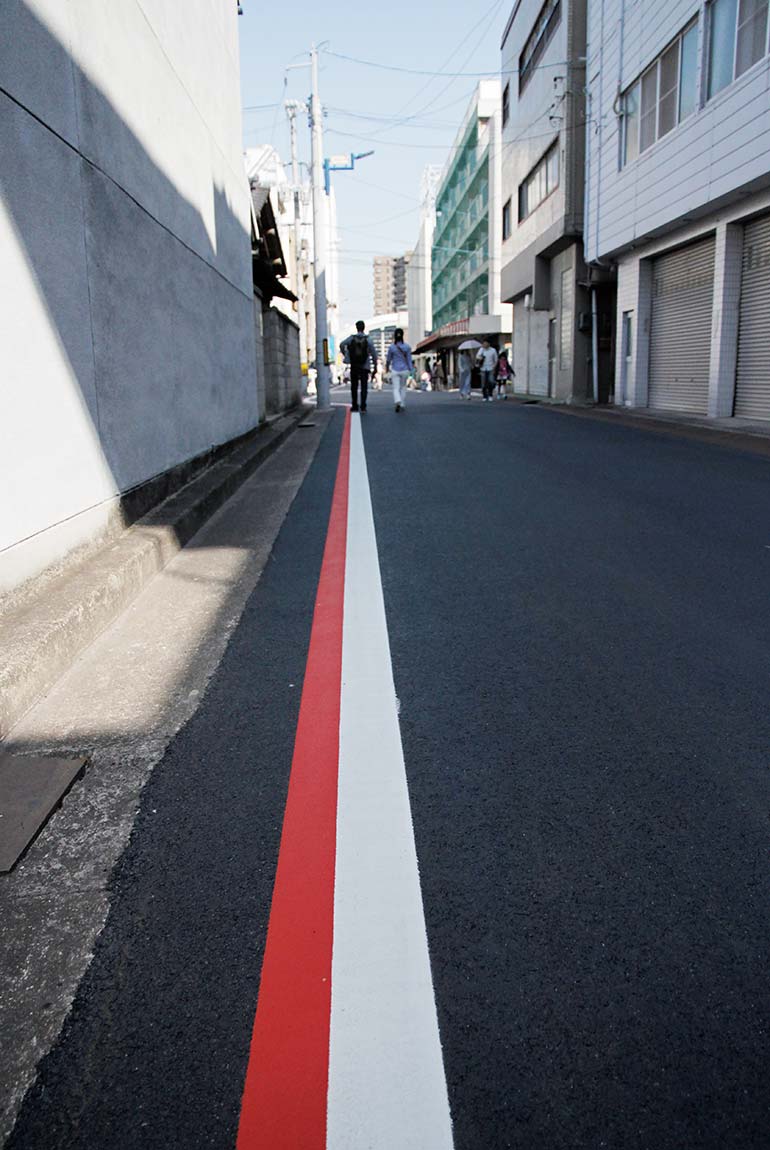
Jeans Street Selvedge Line
Jeans Street not only attracted tourists to Kojima (perhaps for the first time) but made the entire Okayama prefecture synonymous with high-quality Japanese denim. This has been great for the Kojima brands, but often eclipses the important production happening elsewhere. A lot of Japan’s premium denim is made by Kuroki Mills over in Ibara, which is at least Okayama, or at Kaihara in Fukuyama, which is in Hiroshima. Okayama has just done a much better job branding itself, for which Japan Blue Group and Kapital should take most of the credit.
Regardless of where exactly great Japanese denim is made, the rise of Kojima as a jeans mecca demonstrates how small town revitalization can work when most of Japan’s economic activity is being sucked into Tokyo’s vortex. The Okayama denim heritage may be more recent than the myths suggest, but Momotaro and Kapital are working hard to keep the pioneering work of Big John and the other brands alive in the birth place of Japanese jeans.
